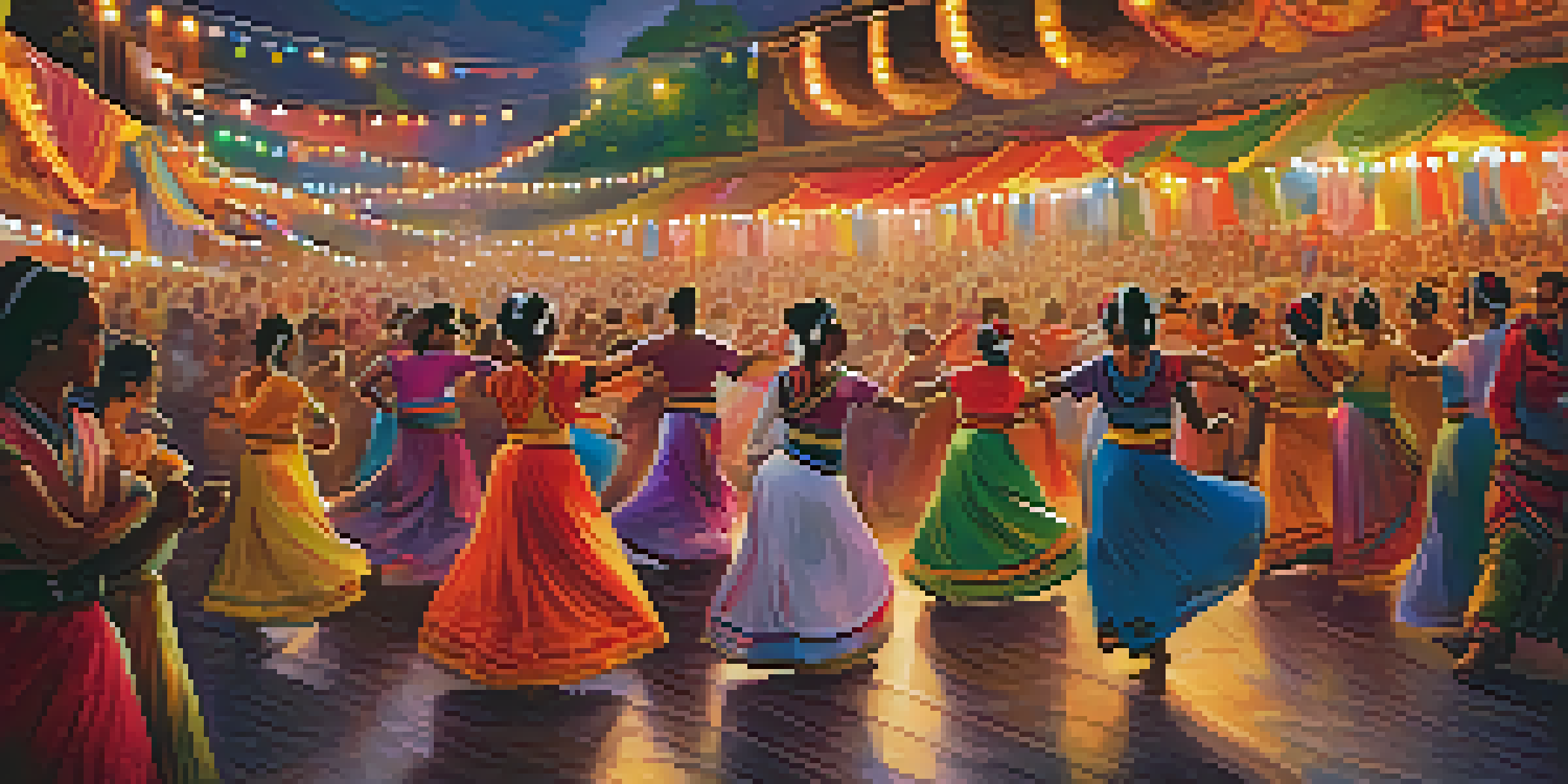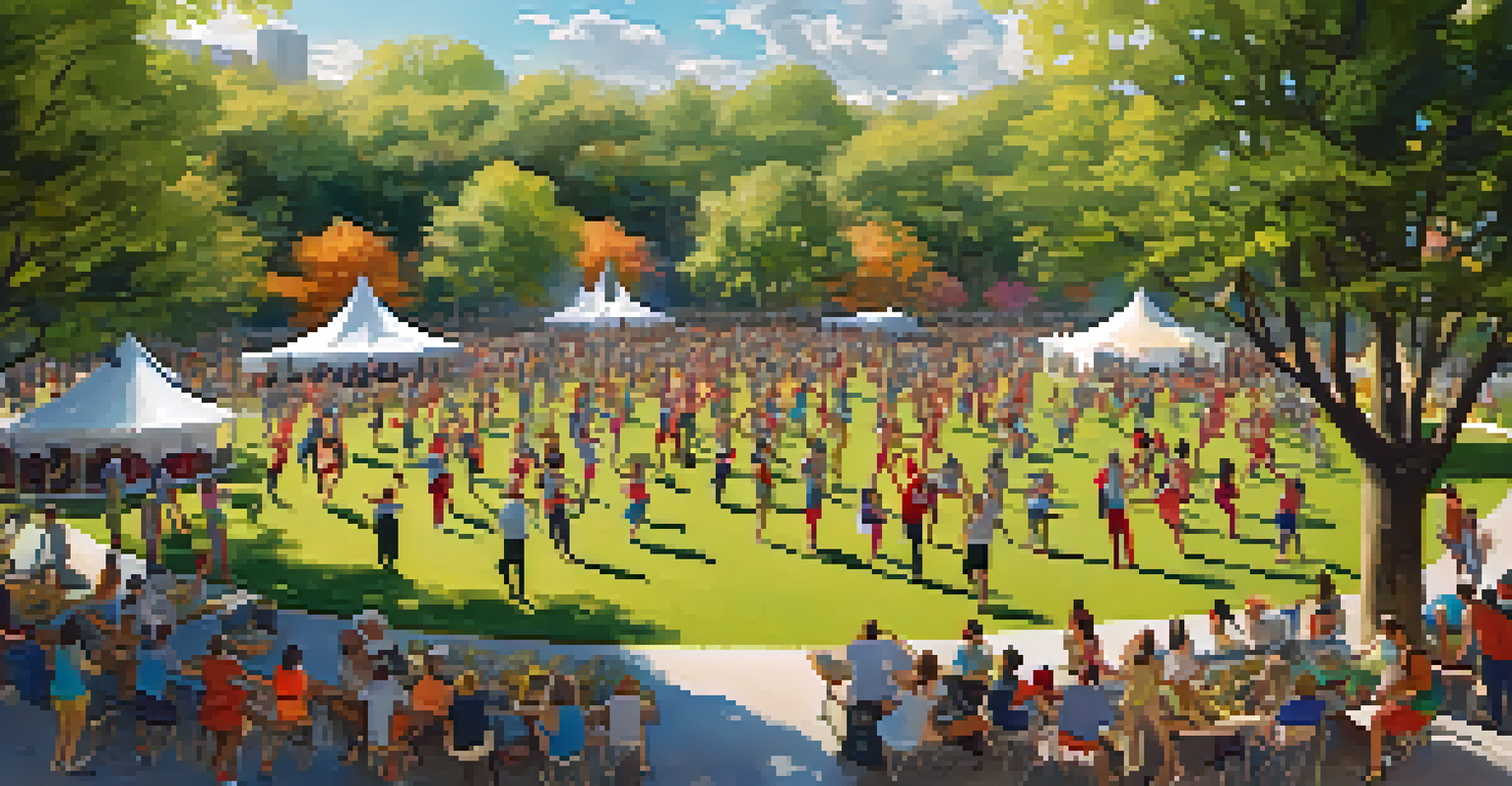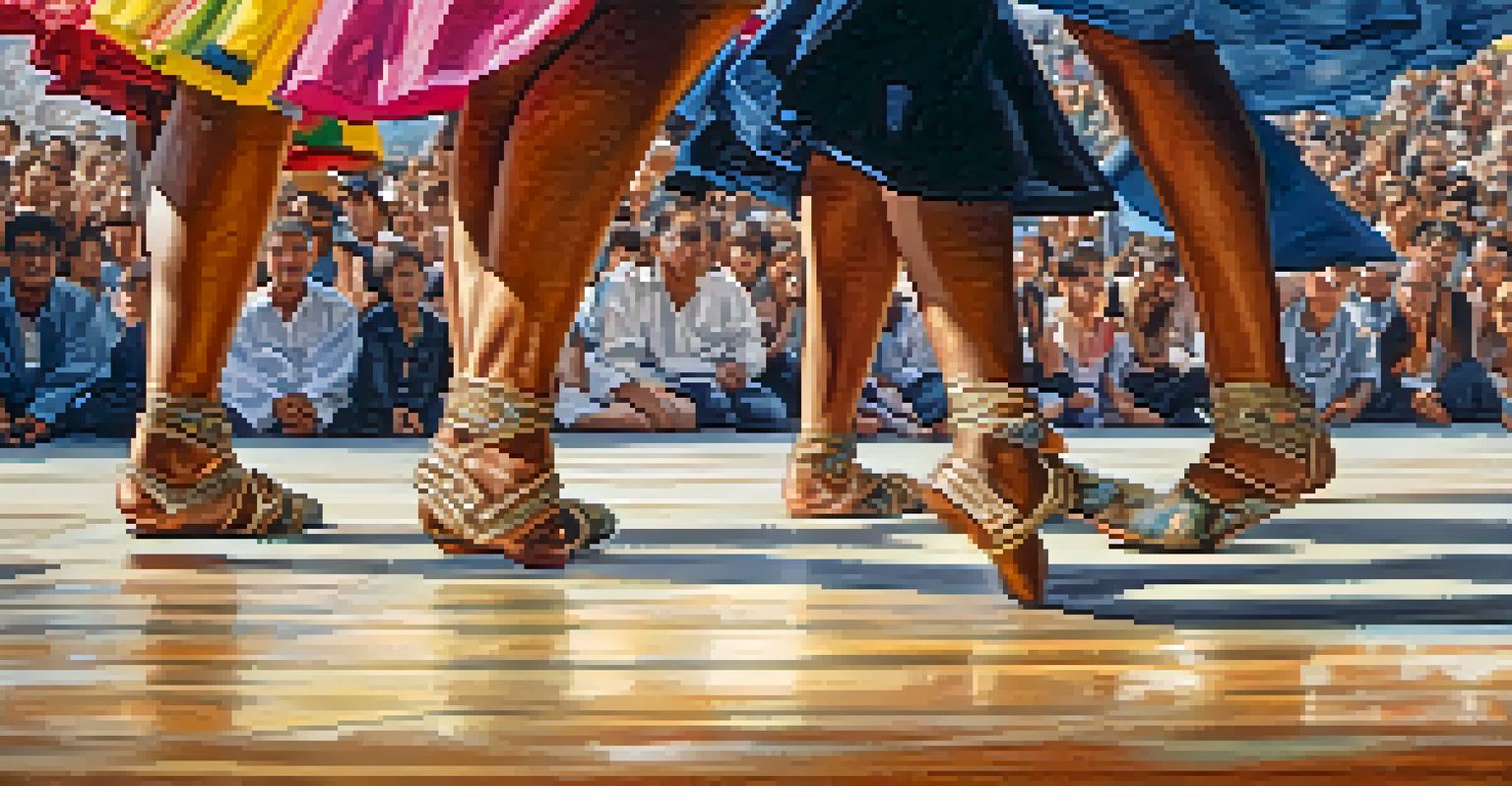Global Dance Festivals: Promoting Health and Cultural Exchange

The Rise of Global Dance Festivals in Modern Culture
In recent years, global dance festivals have surged in popularity, becoming vibrant celebrations of culture and community. These events not only showcase diverse dance styles but also bring people together from different backgrounds, creating a melting pot of artistic expression. As audiences gather to enjoy performances, they also experience the rich tapestry of traditions that each dance represents.
Dance is the hidden language of the soul.
Dancers and enthusiasts flock to these festivals, eager to learn and share their passion for movement. From salsa to contemporary, each festival offers unique workshops, performances, and competitions. This diversity fosters a sense of belonging and provides opportunities for intercultural dialogue among attendees.
Moreover, the rise of social media has contributed to the visibility of dance festivals. Videos of breathtaking performances and workshops often go viral, inspiring even more people to participate. This digital exposure not only boosts attendance but also highlights the importance of dance as a universal language.
Health Benefits of Participating in Dance Festivals
Participating in dance festivals is not just about showcasing talent; it also offers numerous health benefits. Engaging in dance is a fantastic way to improve physical fitness, as it involves cardiovascular activity, strength training, and flexibility. Whether you're learning a new choreography or simply dancing for joy, your body reaps the rewards.

Beyond the physical, dance has mental health benefits that are equally significant. It serves as a form of expression, allowing individuals to release emotions and reduce stress. The communal aspect of dance festivals also helps in fostering connections, which can combat feelings of loneliness and isolation.
Dance Festivals Unite Cultures
Global dance festivals serve as vibrant platforms for cultural exchange, fostering understanding and appreciation of diverse backgrounds through shared artistic expression.
In essence, dance festivals create environments where people can move freely and celebrate their bodies. This freedom promotes body positivity and encourages attendees to embrace their unique physicality, leading to a healthier self-image and well-being.
Cultural Exchange Through Dance: Bridging Gaps
Dance is a powerful medium for cultural exchange, and global festivals serve as platforms for this rich interaction. Participants not only learn about different dance styles but also the cultural stories and histories behind them. This exchange fosters understanding and appreciation of diverse backgrounds.
Dancing is like dreaming with your feet.
For example, a festival featuring African dance might incorporate workshops on traditional drumming, allowing attendees to immerse themselves in the culture fully. This hands-on experience creates a deeper connection than simply observing performances from afar. Such interactions promote respect and curiosity about the world's varied cultures.
Ultimately, these festivals become more than just entertainment; they transform into educational experiences that break down cultural barriers. By dancing together, people from all walks of life can find common ground, celebrating their differences while discovering shared humanity.
Community Building: The Heart of Dance Festivals
At the core of every dance festival is the sense of community it fosters. Participants, whether dancers or spectators, form bonds that can last well beyond the event itself. These connections often lead to collaborations, friendships, and a supportive network that extends into everyday life.
Moreover, local communities benefit from hosting dance festivals as they attract tourism and stimulate the economy. Vendors, artists, and local businesses thrive during these events, showcasing the region's culture and hospitality. This economic boost creates a cycle of support for the arts, enriching the community further.
Health Benefits of Dance Participation
Engaging in dance festivals promotes physical fitness and mental well-being, encouraging participants to embrace body positivity and reduce stress.
In addition, community engagement activities, such as volunteer opportunities, are often integrated into the festival experience. This involvement allows attendees to contribute positively to the event, making them feel like an integral part of something larger than themselves.
The Role of Technology in Dance Festivals
Technology plays a significant role in enhancing the experience of dance festivals. From live streaming performances to using apps for scheduling workshops, technology helps bridge gaps and connect participants globally. This accessibility allows those who can't attend in person to still engage with the festivities.
Moreover, social media platforms are instrumental in promoting festivals and sharing experiences. Attendees can post their favorite moments, creating a digital scrapbook that inspires others to join future events. This online engagement also strengthens the community, as participants feel connected despite geographical barriers.
Additionally, innovations in sound and lighting technology enhance performances, making them more captivating and immersive. As festival organizers embrace these advancements, they create memorable experiences that resonate with audiences long after the event ends.
Sustainability Practices in Dance Festivals
As global awareness about environmental issues grows, many dance festivals are adopting sustainable practices. Organizers are increasingly focused on minimizing their ecological footprint, from reducing waste to promoting eco-friendly materials. This commitment not only benefits the planet but also sets an example for attendees.
For instance, some festivals now encourage participants to use public transport or carpool to reduce carbon emissions. Others implement recycling programs and use biodegradable products at food stalls. Such initiatives demonstrate that celebrating dance can go hand-in-hand with caring for the environment.
Sustainability in Dance Events
Many dance festivals are implementing eco-friendly practices, demonstrating that cultural celebrations can align with environmental responsibility.
By prioritizing sustainability, dance festivals can educate attendees about the importance of protecting our planet. This message resonates with many, inspiring participants to adopt eco-friendly practices in their own lives, creating a ripple effect that extends well beyond the festival.
Future Trends in Global Dance Festivals
Looking ahead, global dance festivals are likely to evolve in exciting ways. With the increasing influence of digital culture, we may see more hybrid events that blend in-person experiences with virtual participation. This flexibility allows for greater accessibility, inviting more people to join the celebration.
Additionally, as the world becomes more interconnected, we can expect an even wider variety of dance styles represented at these festivals. Emerging genres and fusion styles will continue to shape the landscape, reflecting the dynamic nature of cultural exchange. This evolution will keep dance festivals fresh and relevant to new generations.

Ultimately, the future of global dance festivals holds promise not only for the art form itself but also for the communities they create. As they adapt and innovate, they will continue to serve as vital spaces for health, cultural exchange, and connection.